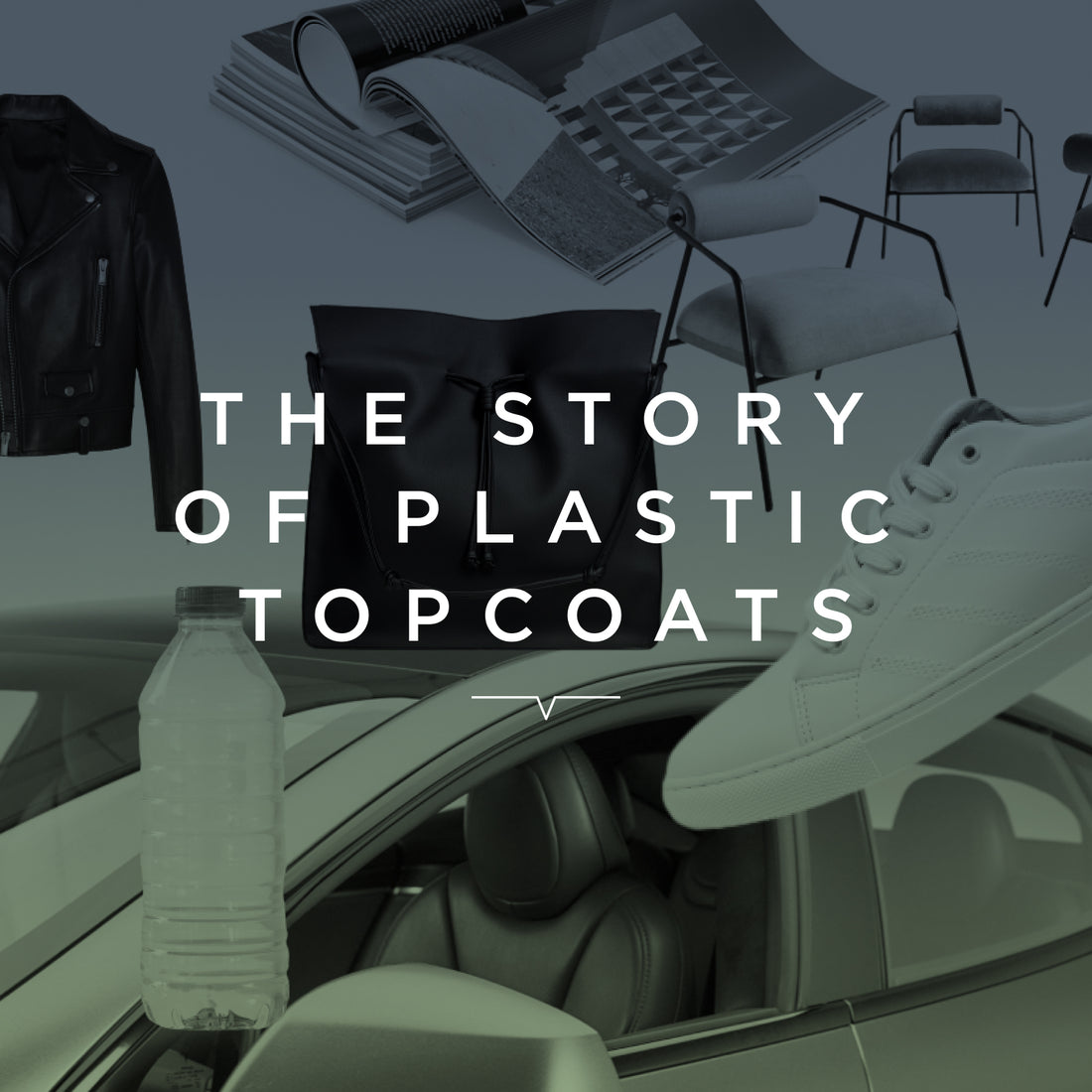Ever wondered about the invisible super ingredient that makes materials last so long?
Three months ago, we launched a groundbreaking plant-based material topcoat called LiquidPlant.
People said nice things, like “it’s the future!” And we enthusiastically agreed.
The truth is that when we began innovating it over 3 years old, we knew that it was going to be a very big challenge, but our team of scientists, designers and innovators were determined to do it.

OK, a quick explainer: topcoats are the secret agents of the materials world. They are everywhere but you can’t see them. Your shoes have an invisible topcoat. So does your laptop case, your phone, your belt, and your packet of cookie dough mix from WholeFoods. Sometimes it feels like the whole world is covered in a topcoat.
As this press story on Liquidplant points out, the only options for durable, affordable topcoats were made from plastic. These plastics are polyvinyl chloride (PVC), or polyurethane (PU) which was invented in 1932 and, when used in its liquid form, can be transformed into a permanent waterproof coating.
Like other kinds of plastic, PVC and PU are almost too good: cheap, robust, and sometimes even breathable.
Only, plastic means petrochemical-derived. This is catastrophic for the climate (plastic combustion is a serious greenhouse gas contributor).
Also, once they coat a recyclable material like paper or cardboard, that material can no longer be recycled.
And when plastic topcoats break down, they become microplastics and then they really are everywhere (including in Arctic sea ice and mothers’ milk, according to recent research).
And while the direct impact of PVC and PU on human health is still unclear, multiple studies have confirmed uncertain toxic impacts on, for example, our hormonal systems, from what is still a relatively mysterious cocktail of chemicals.
The brutal truth is that we don’t yet know enough about them to let them be as everywhere as they are.

Enter the von Holzhausen team. By now you probably get why innovating a plastic-free topcoat was our total obsession. And why we were throw-your-sun-hat-in-the-air happy when we did it.
Liquidplant is made from plants. It’s flexible, tough, waterproof and affordable. It does pretty much everything that PVC and PU topcoats can do but unlike them, it’s low carbon, toxin-free, and circular: when sent to landfill, it breaks down into the materials it’s made from, adding nutrients to the soil instead of microplastics.
Creating it was a journey. We’ve made a lot of progress along the way with plant-based leather alternatives like our Banbū, made from 83% plant-based materials, and our Replant, made from agricultural waste.
But how exactly do you make a topcoat from plants that’s strong enough to be the interior of a car somebody drives for 10 years?
We used green chemistry and formulation tools, and toiled away in the lab. We didn’t give up. And one day, we realized that we’d done it. We had our PVC-free and PU-free topcoat.
Now that we have Liquidplant, it’s more like: “Holy cow! Is there a backing we can’t use this on? Wood, paper, leather, cotton, bamboo … let’s do it.”
We don’t believe there’s a product that comes close to Liquidplant, so we plan to use it on everything we make, and ensure that it’s available, at scale, to like-minded partners (which, we’re glad to say, seems to be a lot of people).
It’s going to replace petroleum-based topcoats forever.
Geek fact: The chemical building blocks of Liquidplant are almost identical to polyurethane, only with abundantly-available plant-based inputs (corn, flax, castor, sugar) instead of crude oil.
Liquidplant is so much better than plastic, it’s like plastic never existed.
We get that summer isn’t the obvious moment to talk about coats - unless the coat in question is made from plants, is strong, invisible, and maybe, possibly, is going to save the world.


